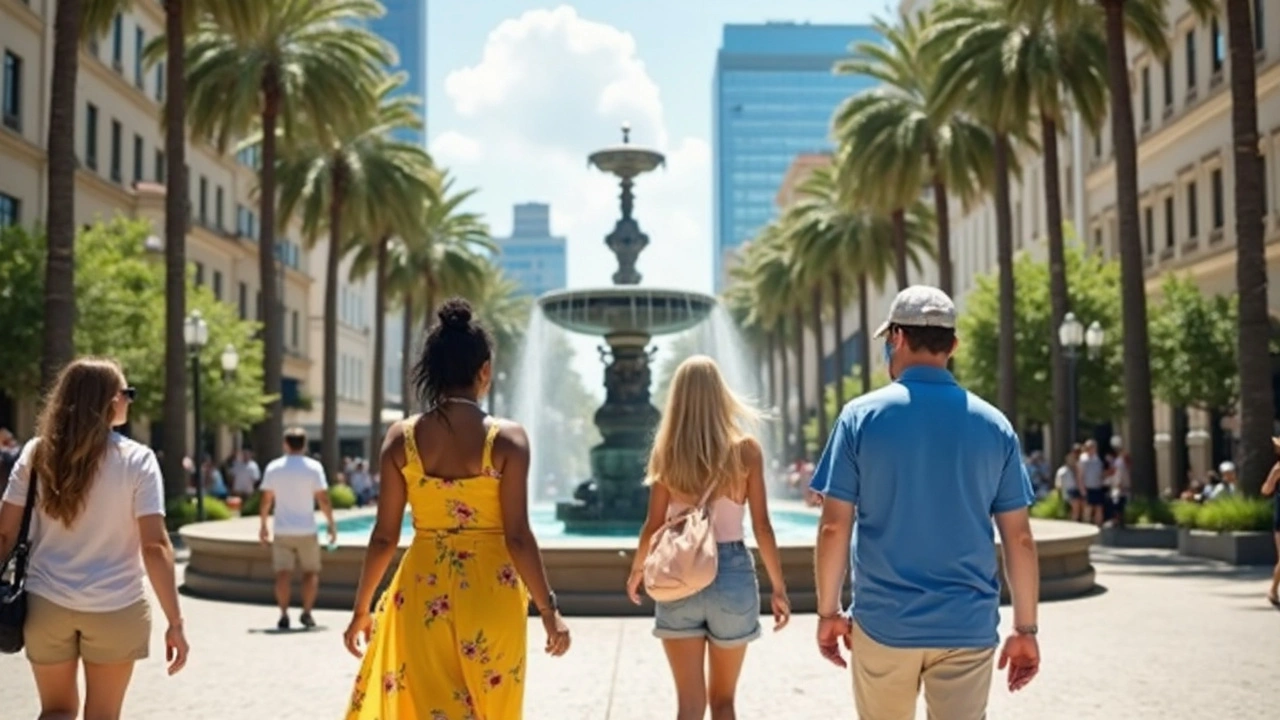Europe’s Tourism Engine Roars Back to Life
Tourists are back in Europe—and in bigger numbers than ever before. Early 2025 saw international arrivals to the continent rise almost 5% compared to last year, putting travel volumes 3% above what we saw back in 2019, before the world hit pause. That’s 125 million visitors arriving in just the first quarter alone, brushing off challenges like inflation, global tensions, and trade scuffles as just bumps in the road.
Spain stood out as the powerhouse, welcoming over 10 million travelers in only two months. Lines in Barcelona’s old town? Longer than ever, even in February. But it isn’t just the usual favorites that are benefiting. Smaller destinations are making headlines for punching above their weight. Malta jumped by a whopping 12.6%, Cyprus saw a 15.4% increase, and Slovakia notched up a 14.3% rise in arrivals. Norway turned heads with a 13.2% growth, proving Nordic winters can be just as magnetic as summer beaches.
Eastern and Central Europe are the quiet winners here. Latvia deserves a standing ovation, with tourist arrivals bouncing back nearly 28%, a clear signal that travelers are discovering value and untapped experiences away from the classic Western blockbusters. Romania’s affordability drew visitors southwards, as tighter wallets search for more budget-friendly adventures—offering everything from medieval castles to snowy mountain trails at a fraction of Western European prices.
How Travelers and Destinations Are Adapting
The game has changed for both travelers and destinations. People aren’t just sticking to the peak summer months. Off-season trips are booming, especially in the Southern Mediterranean, where mild winters and smaller crowds are a big draw. Ski slopes in the Alps and the Carpathians reported strong numbers, while coastal cities in Italy and Croatia didn’t empty out once school started back up in January.
Tourists are watching their budgets—accommodation choices are smarter, meal plans are more flexible, and destinations that offer great experiences without a luxury price tag are reaping the benefits. Unsurprisingly, countries emphasizing value-for-money are seeing the fastest rebounds. That’s why Latvia, Slovakia, and Romania are now go-to choices for adventurous backpackers and families alike.
Despite threats of higher tariffs from the U.S., over 80% of European destinations still posted growth in arrivals from across the Atlantic. American tourists seem undeterred by politics or price hikes, drawn by Europe’s historic cities, cuisine, and reachable flights. Even with the global cost of living on everyone’s minds, people are less willing to give up on travel—just pickier about where and how they spend each euro or dollar.
Zurab Pololikashvili from the UN World Tourism Organization summed it up well: tourism is far more than leisure. It’s about local jobs, keeping small businesses afloat, and injecting energy into economies that really need it now. By leaning into the flexibility of year-round travel and focusing on affordability, the sector isn’t just surviving—it’s thriving. The numbers out of places like Spain, Malta, Slovakia, and beyond are proof enough.




Tourism stats look impressive but the article glosses over real issues like overtourism and the strain on local resources
While the increase in visitor numbers is noteworthy, it remains essential to evaluate the broader economic impact on the European Union, particularly in terms of job creation and fiscal stability. Moreover, a rigorous comparative analysis should be conducted against pre‑pandemic baselines to ascertain the sustainability of this growth.
I get what Sanjay is saying – the numbers are great but we also need to think about the people living in those popular spots. Maybe more responsible travel initiatives could help balance things out.
Europe’s resurgence as a tourism powerhouse is certainly a cause for celebration, and the data presented in the article illustrates a vibrant rebound after years of uncertainty. The 5 % rise in early 2025 arrivals not only surpasses the modest growth of the previous year but also eclipses the pre‑COVID levels by a respectable margin, signalling a robust recovery. Spain’s performance, with over ten million visitors in just two months, underscores the magnetism of its cultural heritage, culinary scene, and Mediterranean climate, all of which continue to draw a diverse array of travelers. Meanwhile, the impressive gains in Malta, Cyprus, and Slovakia highlight a shift towards lesser‑known destinations that are capitalising on their unique offerings and competitive pricing. Latvia’s near‑28 % surge is particularly striking; it reflects a growing appetite among tourists for authentic experiences that extend beyond the well‑trodden Western routes. Similarly, Romania’s affordability appears to be resonating with budget‑conscious explorers, who are discovering the nation’s medieval fortresses, vibrant folk traditions, and pristine mountain landscapes. The article aptly notes the rise of off‑season travel, a trend that mitigates the pressures of peak‑season overcrowding and distributes economic benefits throughout the year. This seasonal diversification not only supports local businesses during traditionally slower periods but also enhances the overall quality of the visitor experience, as travelers encounter fewer crowds and more personalised interactions. Moreover, the emphasis on value‑for‑money destinations aligns perfectly with current consumer sentiments, where cost‑effectiveness is balanced against a desire for genuine cultural immersion. The growth in ski resort visitation across the Alps and Carpathians further demonstrates the sector’s adaptability, appealing to adventure‑seekers and winter sport enthusiasts alike. It is also noteworthy that despite potential geopolitical and tariff concerns, American tourists remain undeterred, maintaining strong transatlantic travel flows. This resilience suggests that Europe’s brand as a repository of history, cuisine, and accessible transport continues to hold substantial allure. From a macroeconomic perspective, the influx of tourists translates into job creation, revitalisation of small enterprises, and a boost to public revenues, all of which are pivotal for post‑pandemic recovery. The UN World Tourism Organization’s reminder that tourism transcends leisure, serving as a lifeline for local economies, reinforces the strategic importance of sustaining this momentum. In conclusion, the confluence of strategic pricing, diversified seasonal offerings, and the promotion of lesser‑known gems has positioned Europe to not only recover but to thrive in the evolving global travel landscape.
The figures are impressive on the surface, yet one must question the methodology behind the reported growth; are these raw arrival numbers or adjusted for repeat visitors? Additionally, the article fails to address the environmental cost of increased air travel, which continues to be a major concern. Finally, while Spain’s numbers dominate headlines, the sustainability of such rapid influxes into already pressured urban centres remains doubtful.
i totally agree wit vicky that the off season travel is a win win for both locals and tourists but we shoud also think about how the local infra strucure can cope with the sudden spikes in visitors especially in small towns
europes tourism boom is lit cant wait to see more places get the love
Absolutely, the vibe is everywhere, and it’s great to see smaller spots finally getting the attention they deserve.
These numbers are being hyped without any real context, and the article overlooks the fact that many of these destinations are already suffering from infrastructure overload. It’s a classic case of celebrating headline‑grabbing stats while ignoring the underlying challenges that could undermine long‑term viability.
Tourism rebounds show promise. However, sustainability must be addressed.
When we chase the next travel trend, we often forget that places have souls, not just sights to check off. The flood of tourists can drown the very culture that drew them in. So maybe the real adventure is learning to travel with reverence, not just a passport stamp. It’s a subtle dance between curiosity and respect, one that we often ignore in our hurry.
The growth data suggests that value‑focused destinations are resonating with travelers, indicating a shift in market preferences. Destinations could leverage this insight by enhancing affordable yet authentic experiences, thereby sustaining momentum. Monitoring visitor satisfaction will be key to ensuring that rapid growth does not compromise quality.
The tourism figures presented illustrate a noteworthy recovery despite ongoing global challenges. Continued strategic investment in sustainable infrastructure will be essential to maintain this positive trajectory
It’s cool to see people exploring new corners of Europe, especially places that don’t get the usual hype.